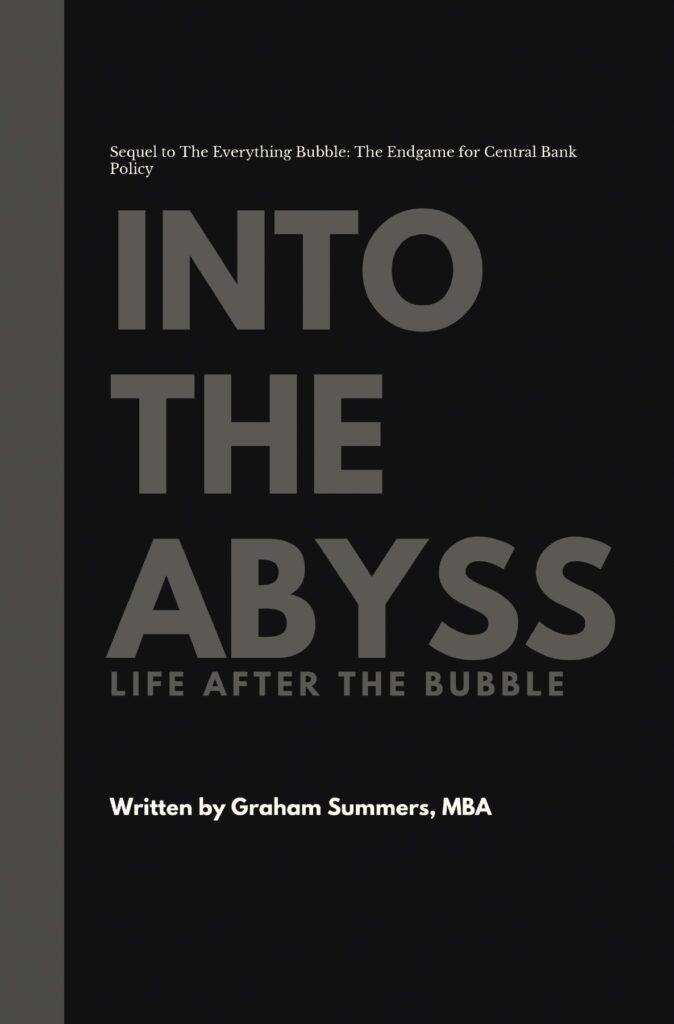By Graham Summers, MBA | Chief Market Strategist
On Friday after the market’s close, Moody’s downgraded the U.S.’s credit rating from AAA to Aa1. While the timing of this announcement is suspect (where was Moody’s during the last four years when the U.S. added nearly $10 trillion in debt?) it’s still a BIG deal for investors.
Why did Moody’s do this?
The credit rating agency notes the U.S. is on an unsustainable trajectory as far as spending and debt is concerned. Moody’s expects the U.S.’s deficits to hit 9% by 2035 while its Debt to GDP ratio will hit 134%. At that point the country’s debt levels would be more akin to an emerging market than the global leader of the world.
The markets are a sea of red this morning as this downgrade has systemic significance. It might be quite early, but Moody’s is noting the same thing that gold and other assets have begun to predict.
The reality is the U.S. is heading towards a debt crisis.
As exciting as the Department of Government Efficiency’s (DOGE) various announcements about cutting waste are, the reality is that all of its cuts amount to very little in the grand scheme of things. And for all the Trump administration’s talk of balanced budgets, the current spending bill it is proposing will ADD to the debt, not shrink it.
The U.S. has $36 trillion in debt and is currently running a deficit of $1.5 trillion per fiscal year. Moreover, the deficit is UP, not down for the first five months of fiscal year 2025. And not by a little: deficit spending rose by $318 billion or 38% during the first five months of 2025.
Regardless of who was/ is President while this is happening, and regardless of his agenda, the math simply no longer adds up. Unless the U.S. makes MASSIVE cuts to its largest spending items (entitlements, social spending), there is no way on earth the budget gets balanced.
The issue with this is that even suggesting any cuts to entitlements/ spending is political suicide. For decades the U.S. political class has “bought” votes by promising to spend money on various social issues. Roughly one third of American households receive some kind of government assistance/ entitlement spending.
Good luck cutting that while staying in office.
So, what does this mean for investors?
A debt crisis is coming. It won’t be in the next week or month, but it’s coming. And when it hits, the only way out of the mess is for the Fed and Federal government to “inflate” away the debt: a default would trigger a systemic collapse of the financial system.
This is as close to a “sure thing” as you can get in investing: the $USD will be devalued aggressively as the Fed is forced to print money and use it to buy U.S. debt. The dollar has lost a third of its purchasing power since the Fed began large-scale Quantitative Easing (QE) programs in 2007. It’s only going to get worse from here.

This is why gold is erupting higher, breaking out against every major world currency. It’s why BTC is fast approaching all-time highs. It’s even why stocks have exploded upwards from the April lows (don’t forget, stocks are an inflation hedge).
There is a limited amount of time to prepare for this. And smart investors are already taking steps to make sure they’re ready for when it hits.
If you’re worried about a crash happening, you need to ignore sentiment and “feelings” and rely on quantitative tools that have accurately predicted them in the past.
We’re developed precisely such a tool: a highly accurate “crash trigger” that went off before the 1987 Crash, the Tech Crash, and the 2008 Great Financial Crisis.
We detail this trigger, how it works, and what it’s saying about the market today in a Special Investment Report titled How to Predict a Crash.
Normally this report is only available to our paying clients, but in light of what’s happening in the economy today, we are making just 99 copies available to the broader public.
To pick up one of the remaining copies…
Graham Summers, MBA
Chief Market Strategist
Phoenix Capital Research





